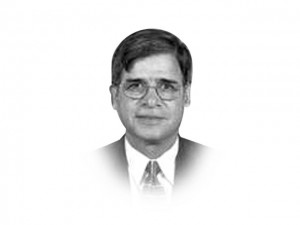A history of an oppressed community
The genesis of the Shia community’s persecution goes back to October 1979, when the Iranian revolution occurred. The impact of the revolution was far-reaching. Certain Middle Eastern kingdoms and caliphates panicked. They didn’t want to see Iran undergo an Islamic revolution, thinking that other Muslim countries in the region might follow suit and cause Arab kingdoms and caliphates to fall like a house of cards. So, they started hatching intrigues against Iran.
In September 1980, barely 11 months after Iran’s Islamic revolution, its neighbour Iraq invaded it. Iraq had the full blessing of its Arab neighbours, plus some superpowers in the West who stoked the fire through provision of war supplies. For eight years, Iran bled — but it did not bleed to death. The irrepressible nation survived. But in the eight-year battle, both nations suffered the demise of millions of people, mostly innocent civilians. Like Iran, Iraq has an overwhelming population of Shias — between 65 and 70 per cent of the total population.
According to some, this revolution was confined to Iran’s geographical limits and the war prevented the revolution from spreading to Kuwait, Bahrain and the eastern province of Saudi Arabia. Some more Arab states entered the USSR-Afghan War with their cryptic strategy to help the extremists in Pakistan and Afghanistan. The Anjuman Sipah-e-Sahaba was formed in the early 1980s.
Bahrain acquired independence from the UK in 1971. Two-thirds of its population had close ties with Iran and hence, Iran laid claim on Bahrain. In February 2011, a protest was held in Manama, which ended in police brutality. Some 80 people were killed and nearly 3,000 arrested, of whom five were killed in police custody. Police brutality was on the rise.
In the 1960s, the Shia community of southern Lebanon lived very quietly, as it had been for centuries. They were so peaceful that they were denigrated to the extent of being termed the Mitawalis (mausoleum caretakers). Most of them were from the middle and lower-middle classes.
An avant-garde Iranian cleric, Imam Musa Sadr, emerged in Lebanon and began organising the marginalised Shia community to rebel against the community’s domination by a handful of feudal families. The Imam felt that his task was to struggle against the feudals and awaken the oppressed community out of its deep slumber. While the Shias were 35 per cent of the population demographically in Lebanon, each government discriminated against and disfranchised them to unfairly show them to be 10 to 15 per cent population-wise. Then, their land of south Lebanon became occupied by the Palestinians and then the Israelis. The Shias of southern Lebanon tolerated that. However, on March 17, 1974, in Baalbek, Bekaa valley, Imam Musa delivered an important speech:
“Starting from today, we will no longer complain nor cry. Our name is no longer the Mitwalis; our name is ‘men of refusal’. ‘Men of vengeance’. ‘Men who revolt against tyranny’ even though this costs us our blood and our lives.”
Some 50,000 rifles fired at once to greet the Imam’s prophetic words. The firing was so intense that in the hail of the falling bullets, nearby trees were stripped of their greenery. Imam Musa was followed by Hasan Nasrullah, who is the head of Hezbollah. However, the community’s resolve has remained unchanged.
Sadly, while the Shia populations of south Lebanon may be accommodated, the Shia populations in Pakistan face difficulty.
Published in The Express Tribune, March 19th, 2013.
http://tribune.com.pk/story/522702/a-history-of-an-oppressed-community/


Up to now, you need to term of hire an absolute truck or van and will also be removal equipments to valuable items plus take a look at the new destination. From the long run, which finish up with are couple of points except anxiety moreover stress and anxiety. removals stockport
chaussure jordan basse
[url=http://www.wrrc.org/iw/index.php?pid=4686]chaussure jordan basse[/url]
Hello Web Admin, I noticed that your On-Page SEO is is missing a few factors, for one you do not use all three H tags in your post, also I notice that you are not using bold or italics properly in your SEO optimization. On-Page SEO means more now than ever since the new Google update: Panda. No longer are backlinks and simply pinging or sending out a RSS feed the key to getting Google PageRank or Alexa Rankings, You now NEED On-Page SEO. So what is good On-Page SEO?First your keyword must appear in the title.Then it must appear in the URL.You have to optimize your keyword and make sure that it has a nice keyword density of 3-5% in your article with relevant LSI (Latent Semantic Indexing). Then you should spread all H1,H2,H3 tags in your article.Your Keyword should appear in your first paragraph and in the last sentence of the page. You should have relevant usage of Bold and italics of your keyword.There should be one internal link to a page on your blog and you should have one image with an alt tag that has your keyword….wait there’s even more Now what if i told you there was a simple WordPress plugin that does all the On-Page SEO, and automatically for you? That’s right AUTOMATICALLY, just watch this 4minute video for more information at. Seo Plugin